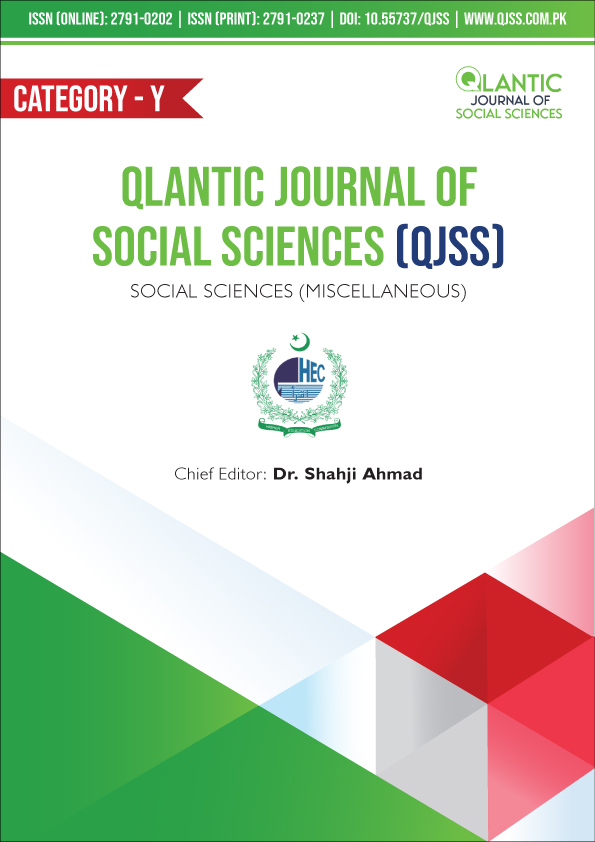Substation Automation System (SAS) as a Catalyst for Effective Project Implementation in the Energy Sector
DOI:
https://doi.org/10.55737/qjss.vi-i.25311Keywords:
Project Management, Project Manager, Problem-Solving, Emotional Intelligence, Knowledge Sharing, Project SuccessAbstract
SAS enable them to meet workplace challenges and make sure that they are exploring accessibility ideas with the support of a better use of tools of monitoring. This study aims to shed light on the critical role of SAS in energy project management. It will provide actionable strategies for project managers to harness creativity and innovation, ultimately leading to more successful and sustainable project outcomes. By bridging the gap between creativity and project success, this research will contribute significantly to the discourse on innovation and leadership in the energy sector. A sample of 100 respondents has been chosen from the relevant group practising SAS at their workplace. The data has been further executed with the help of relevant approaches of PLS software where statistical operations are applied to ensure validity and reliability in the output. The output justifies that there is a positive role of SAS in increasing the project success parameter because of positive implications in the perspective of a theoretical outline and solutions for the problem-solving techniques application. The study recommends that policymakers should facilitate the project managers to meet the challenges in the energy sector by implementing SAS. The study has positive implications and is helpful for the project managers and the decision-makers in the energy sector to apply the modern tools of SAS.
References
Aftab, M. A., Hussain, S.S., Ali, I., Ustun, T. S. (2020). IEC 61850 based substation automation system: A survey. International Journal of Electrical Power & Energy Systems, 120, 106008. https://doi.org/10.1016/j.ijepes.2020.106008
Cacereño, A., Greiner, D., Zuñiga, A., & Galván, B. J. (2024). Design and Maintenance Optimisation of Substation Automation Systems: A Multiobjectivisation Approach Exploration. Journal of Engineering, 2024(1), 9390545. https://doi.org/10.1155/2024/9390545
He, L., & Jiang, P. (2020). August. P-SAS: knowledge service-oriented manufacturing workflow model for knowledge collaboration and reuse. In 2020 IEEE 16th International Conference on Automation Science and Engineering (CASE) (pp. 570-575). IEEE. https://doi.org/10.1109/CASE48305.2020.9216974
Kompalli, V., Puhan, P.S., Pasupala, R., & Raavi, S. (2023). February. Substation Automation System (SAS) Using SIEMENS SICAM 230. In International Symposium on Sustainable Energy and Technological Advancements (pp. 239-248). Singapore: Springer Nature Singapore. https://doi.org/10.1007/978-981-99-4175-9_20
Mnukwa, S., & Saha, A. K. (2020), January. SCADA and substation automation systems for the port of Durban power supply upgrade. In 2020 International SAUPEC/RobMech/PRASA Conference (pp. 1-5). IEEE. https://doi.org/10.1109/SAUPEC/RobMech/PRASA48453.2020.9041078
Pakulska, T., & Poniatowska-Jaksch, M. (2022). Digitalization in the Renewable Energy Sector—New Market Players. Energies, 15(13), 4714. https://doi.org/10.3390/en15134714
Park, C. (2022). Expansion of servitization in the energy sector and its implications. Wiley Interdisciplinary Reviews: Energy and Environment, 11(4), e434. https://doi.org/10.1002/wene.434
Pandey, P., & Pandey, M. M. (2021). Research methodology tools and techniques. Bridge Center.
Singh, M., Jiao, J., Klobasa, M., & Frietsch, R. (2022). Servitization of energy sector: Emerging service business models and startup’s participation. Energies, 15(7), 2705. https://doi.org/10.3390/en15072705
Silva, G., Marques, M. C., Dias, P., Melo, H., Fortunato, C., Pereira, A., Barbosa, H., & Abrantes, E. (2021). TESTING IEC 61850 IN MULTI-VENDOR SUBSTATION AUTOMATION SYSTEM. https://doi.org/10.1049/icp.2021.1510
Verma, R., Verma, S., & Abhishek, K. (2024). Research methodology. Booksclinic Publishing.
Vo, T. M. N., Wang, C. N., & Yang, F. C. (2023). SAS Model Assessment-A DEA Approach. The Eurasia Proceedings of Science Technology Engineering and Mathematics, 23, 106-116. https://doi.org/10.55549/epstem.1363369
Wulf, F., Lindner, T., Strahringer, S., & Westner, M. (2021). IaaS, PaaS, or SAS? The why of automation computing delivery model selection: Vignettes on the post-adoption of automation computing. In Proceedings of the 54th Hawaii International Conference on System Sciences, 2021 (pp. 6285-6294). https://aisel.aisnet.org/hicss-54/os/practice-based_research/5/
Zúñiga, A., Branco, P., Fernandes, J. F., & Tarquinio, J. P. (2023). Reliability analysis of the control and automation systems in electrical substations. Authorea Preprints. https://doi.org/10.36227/techrxiv.17014187.v1




